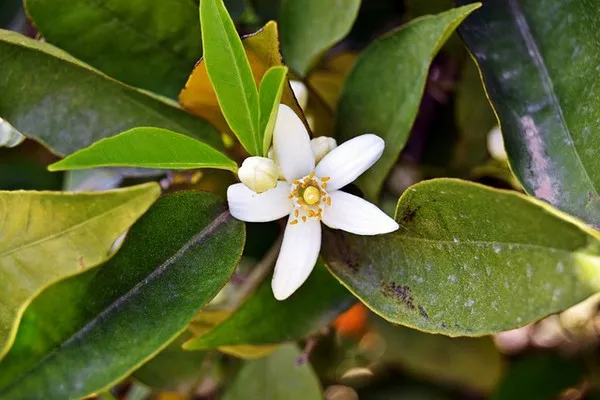Gardening enthusiasts and nature lovers often find solace and joy in cultivating flowers. The process of nurturing a tiny seed or bulb into a vibrant, blooming flower can be a truly rewarding experience. However, the journey from planting to full bloom varies significantly depending on the type of flower, environmental conditions, and cultivation methods. In this article, we will explore the fascinating world of flower growth timelines, shedding light on the factors that influence them and providing insights into the typical duration it takes for various flowers to reach their full splendor.
Factors Influencing Flower Growth
Before delving into specific flower timelines, it is crucial to understand the factors that influence the growth and development of flowers. These factors include:
Type of Flower: Different flowers have unique growth patterns and timelines. Some flowers, like marigolds and zinnias, grow relatively quickly, while others, such as peonies and roses, take longer to mature.
Environmental Conditions: Environmental factors like temperature, humidity, and sunlight play a pivotal role in flower growth. Flowers native to specific regions may thrive under certain conditions while struggling in others.
Planting Method: The method used to start the flower’s growth, whether from seeds, bulbs, or transplants, can impact the time it takes for a flower to bloom. Some methods, like planting seeds directly in the garden, may take longer than starting with established plants.
Soil Quality: The quality and fertility of the soil can significantly affect the growth rate of flowers. Well-amended, nutrient-rich soil promotes faster growth compared to poor-quality soil.
Watering and Feeding: Proper watering and fertilization practices are essential for healthy flower growth. Adequate moisture and nutrition can accelerate the flowering process.
Pruning and Maintenance: Regular maintenance, including deadheading spent flowers and pruning, can encourage continuous blooming throughout the growing season.
Now, let’s explore the typical timelines for some popular flower varieties.
Annual Flowers
Annual flowers complete their life cycle within a single year, from seed germination to flowering to seed production. Here are a few examples of annual flowers and their approximate growth timelines:
Zinnias: Zinnias are known for their rapid growth. They typically germinate within 3 to 7 days of planting and produce their first flowers in about 60 to 70 days. With proper care, zinnias can bloom continuously until the first frost.
Marigolds: Marigolds are another fast-growing annual flower. They usually bloom within 50 to 60 days after planting seeds. Regular deadheading can prolong their blooming period.
Cosmos: Cosmos flowers start blooming roughly 50 to 60 days after planting seeds. These daisy-like flowers are known for their delicate beauty and can thrive in a variety of soil conditions.
Perennial Flowers
Perennial flowers have a longer life cycle, returning year after year once established. While they may take longer to reach maturity compared to annuals, they offer the benefit of continued blooming. Here are a few examples:
Roses: Growing roses can be a patient gardener’s delight. Depending on the variety, it may take anywhere from several weeks to several months for roses to produce their first blooms. Established rose bushes, however, can bloom prolifically for years.
Peonies: Peonies are renowned for their stunning, lush blooms, but they are also known for their patience-testing growth period. It can take 2 to 3 years for newly planted peonies to produce their first flowers. Once established, they can thrive for decades.
Lavender: Lavender plants typically take about 2 to 3 years to reach maturity and produce abundant blooms. Their fragrant flowers make them a favorite among gardeners.
Bulb Flowers
Bulb flowers, such as tulips and daffodils, grow from bulbs that are planted in the fall or early spring. They have their own unique growth patterns:
Tulips: Tulips are known for their iconic spring blooms. After planting tulip bulbs in the fall, it usually takes about 3 to 4 months for them to flower in the spring. Once the bloom period begins, it can last for several weeks.
Daffodils: Daffodils, also planted as bulbs in the fall, typically bloom in early spring. Their growth cycle spans 4 to 6 months, depending on the variety. Daffodils often naturalize and multiply, providing more blooms each year.
Conclusion
In the world of gardening, patience is truly a virtue. The timeline for flower growth varies widely depending on factors such as the type of flower, environmental conditions, planting method, soil quality, and care practices. While annual flowers like zinnias and marigolds can provide almost instant gratification, perennial flowers and bulbs often require more time and patience but reward gardeners with blooms that return year after year.
Understanding the growth timelines of different flowers allows gardeners to plan their gardens more effectively, ensuring a continuous display of color and beauty throughout the growing season. So, whether you’re planting annuals for quick bursts of color or perennials for long-term beauty, the journey from seed to bloom is a fascinating and rewarding one, demonstrating the wonder and resilience of nature.


